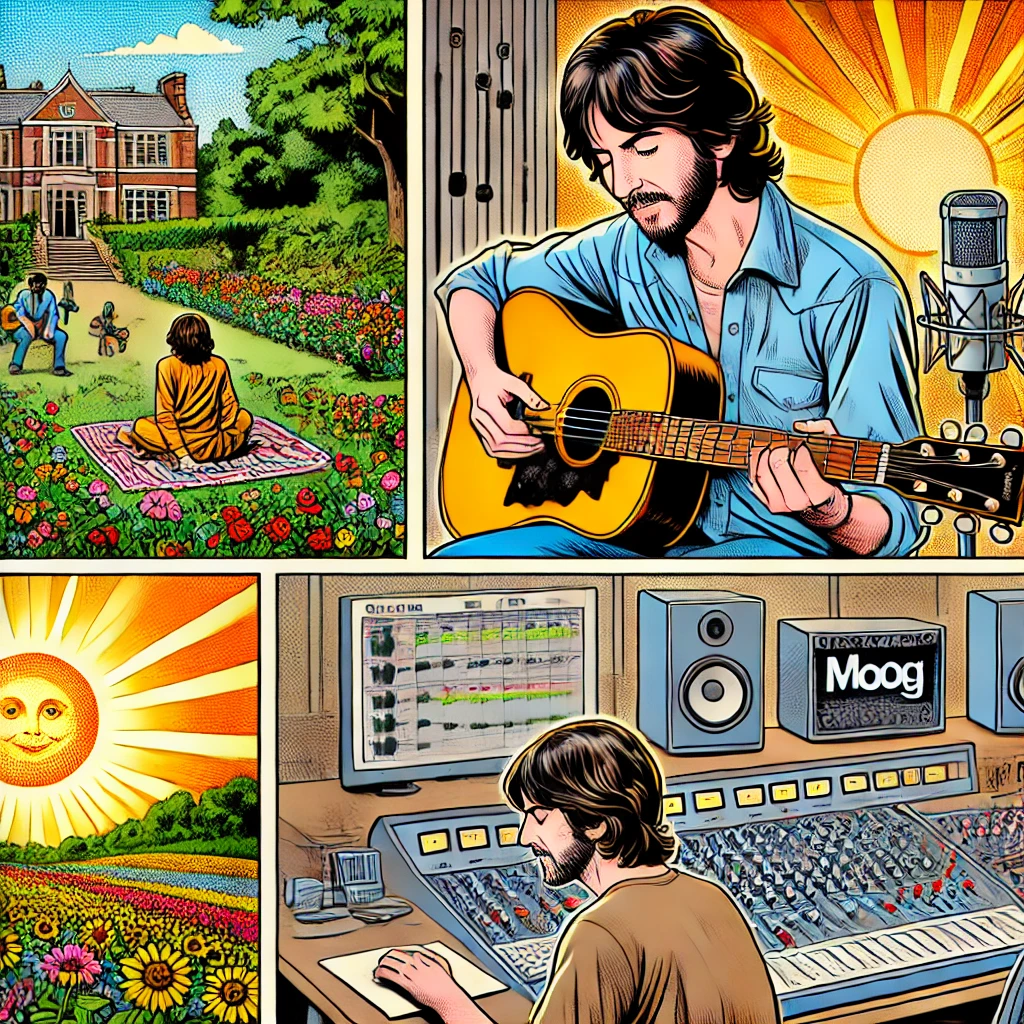The Amazing Recording History of Here Comes the Sun
Here Comes The Sun has become one of the most popular and treasured Beatles songs, a gateway into their music for many new fans. This 3-minute gem of unforgettable songwriting is also packed with intriguing anomalies, production quirks and even a mystery. Unlike the vast majority of Beatles songs, Here Comes the Sun was not written by the main songwriting duo of Paul McCartney and John Lennon, but rather by George Harrison, the youngest member of the quartet, who contributed two memorable pieces to the Abbey Road album – an endearing love song called Something, and the effervescent Here Comes the Sun.
“Here Comes the Sun,” one of The Beatles’ most cherished tracks, showcases George Harrison’s songwriting prowess and innovative recording techniques. Composed in early 1969 at Eric Clapton’s Surrey residence, Harrison sought solace from the band’s business affairs, crafting a song that radiates optimism and renewal.
The recording sessions, primarily at EMI Studios (Abbey Road), began on July 7, 1969, coinciding with Ringo Starr’s 29th birthday. John Lennon was absent, recuperating from a car accident, leaving Harrison, Paul McCartney, and Starr to lay down the initial tracks. Harrison’s acoustic guitar and guide vocals, McCartney’s bass, and Starr’s drums formed the foundation. Over subsequent sessions, Harrison added layers, including a distinctive Moog synthesizer part recorded on August 19, 1969, enhancing the song’s ethereal quality.
A notable aspect of the recording is Harrison’s use of a Leslie speaker, typically associated with organs, to process his guitar, imparting a unique tonal character. Additionally, an unused guitar solo, rediscovered in 2012, offers insight into Harrison’s creative process, though it didn’t feature in the final mix.
Despite not being released as a single, “Here Comes the Sun” has garnered immense popularity, becoming the most streamed Beatles song on platforms like Spotify. Its enduring appeal lies in its uplifting melody, intricate production, and the sense of hope it conveys, reflecting Harrison’s artistic vision and the collaborative spirit of The Beatles during the late 1960s.
